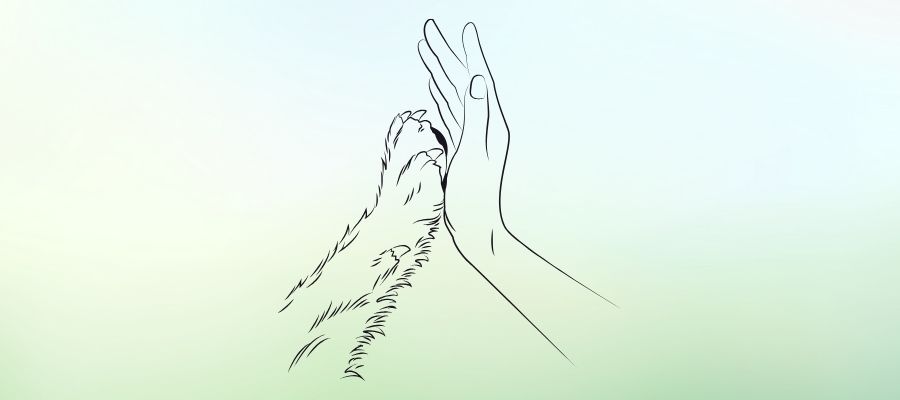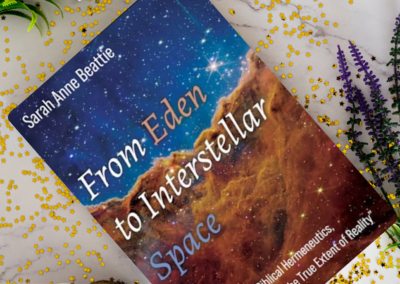
I come from Irish and Australian parentage and was raised as a missionary kid in India. I am an associate professor of paediatrics at the University of Otago and a paediatrician at Christchurch Hospital. As a teenager, I was a keen Christian and keen on science. I found a book The Genesis Flood, that seemed to tie these together and explain away the uncomfortable ideas of evolution, and in my first year of university, I used quotations from this book to argue against our lecturers in Zoology who I felt were bent on “preaching” evolution to us. Through medical school, however, I was nonplussed by the stunning similarities between humans and animals, for instance, that most human physiology had been understood first by experiments on animals. Gradually I came to appreciate creation in more breadth, and my appreciation of God grew as my universe got older and bigger and more interrelated. In 2011, I wrote a book intended for young Christians (and others) struggling with evolution.
Humans are animals.
We can be in no doubt. Not only do we share the structure of DNA with all our living creatures, but also the genetic code and a large proportion of our proteins. When fish bleed, they bleed haemoglobin, the same protein in our red blood cells, when the human embryo decides which is its back and front ends it does so with a group of proteins that jellyfish embryos use to define their top and bottom ends. We are made of cells with organelles, like all other eukaryotes, of tissues and organs, not only shared with all vertebrates but arranged similarly – the liver is characteristically on the right side in humans and fish. And even a pathologist would have difficulty distinguishing which of these slides was dog heart muscle and which human heart muscle. We share glucose metabolism with all living creatures – the citric acid cycle – we share sexual reproduction with plants and animals: that means that all of us start as a single-celled organism, not a clone; and our nervous system is based on the same principles even as invertebrates, like the giant squid, whose giant nerves originally helped scientists understand human nerve conduction.
Not only are humans animals but we bear the unmistakable fingerprint in our DNA of being related, by ancestry, to animals. Three examples are given, discussing the development in our ancestral line of novel gene function in the placenta (from viruses) in the eye (from duplicating genes), and our overall gene identity with chimpanzees.
Endogenous Retrovirus Insertions
Imagine you are preparing an essay – perhaps on engineering cows to convert methane into solar-powered cells, or on capturing hydro-electric energy from irrigation run-off – what do you study at Lincoln, I wonder? As you muse in the café, an idea occurs and you start a musing line on your online word processor which you share with your study group “Eating an egg sandwich, gave me an idea…” But just as you type ”…gg sandw…” there is an interruption, and you don’t immediately see the letters so you type them again. When you have finished you find the interruption was caused by someone else, maybe the administrator, who had typed “A4 envelopes”. Now, your original typing which had been paused, as well as the letters you had re-typed, now appear bracketing the insertion.
This is how retroviruses insert their DNA [A4 envelopes] into totally unrelated human, mammal, reptile, fish or whatever DNA. The repeated bracketing letters are characteristic marks of the retrovirus insertion.
As you can see in this diagram, the retrovirus DNA, labelled, “ERV DNA”, inserts itself into a random bit of mammal DNA (I have invented the letters of the DNA sequence), and as it does, it brackets itself with a duplication of the green letters on either side – “target site duplication”. The mammal DNA could be a gene, a promoter, noncoding DNA, or even DNA from an earlier retrovirus. The retrovirus then uses the mammal DNA copying facility to make thousands of copies of itself, which leave the cell to infect other cells or other creatures. But it leaves the inserted DNA behind – it becomes “endogenous” – part of the host DNA, and if it occurs in sperm or egg DNA it gets passed on to succeeding generations. Molecular and cancer scientists have discovered that our DNA is littered with these endogenous retrovirus inserts – 5-8% of our genome! And all humans share these ancient retroviruses. Besides the Target Site Duplication, the native genes of the retrovirus itself can be recognised in many of these insertions, though some have deteriorated over time. One such gene is the virus “envelope” gene.
The envelope gene allows the virus membrane to fuse with the membrane of the cell it is going to invade, prior to emptying its DNA package into the cell. Some viruses actually cause neighbouring cells to fuse membranes with each other until you get a large area without boundaries but composed of the contents and nuclei of many cells. This is called a “syncytium”. The mammalian placenta has a layer that forms such a syncytium, indispensable to supporting the fetus, and it turns out that ancient retrovirus envelope genes are responsible, different retroviruses in different mammal families. Placental mammals have co-opted these virus genes which are now essential to reproduction.
One such gene is the gene for the “Syncytin 1” protein. It is common to all apes and its gene is found in exactly the same section of DNA in all apes. You can see the same yellow virus insertion, labelled “ERV WE1” between the duplicated letters CAAC. It also occurs in Old World (African and Asian) monkeys but in these creatures (not shown) it is inactivated by mutations. When we compare the surrounding sequence with other animals such as New World (American monkeys), prosimians (lemurs) and even dogs, you can see the very same stretch of DNA letters, and the target site – a single CAAC without the virus or the duplication. Such a random event as this could only happen once – it is the equivalent of a small meteorite landing on your driveway, taking out the third and fourth paving stones from your azalea border and denting the fifth, 23 paving stones in from the pavement. How often is that going to happen exactly the same way with an identical meteorite? Similarly, this identical virus insertion in a random corner of ape DNA can only have happened once, and it must have occurred in an ancestor of Old World Monkeys and apes after they split off from the ancestors of New World monkeys.
Another gene is that for the “Syncytin 2” protein. You can see the same pattern – part of the virus DNA is shown here with the dots indicating the central portion left out for brevity. Again, it is in exactly the same stretch of DNA with the same target site duplication, this time in all apes and monkeys, but the uninterrupted stretch of DNA with a single copy of the target site is found in prosimians. Remarkably, the stretch of DNA this gene inserted into was the DNA of a previous retrovirus insertion.
Syncytin 1 and Syncytin 2 are today indispensable to primate and human placental function – all because our ancestors were infected by two retroviruses which they put to work!
Red Colour Vision
Not all animals have red colour vision. This is my dog looking for the orange ball, which is obvious to us from a long distance, but only obvious to my dog by smell and shape.
My dog would see a plum tree, with ripe plums, like this:
Many mammals, like the dog, and like most New World Monkeys, have three proteins in their retinae that are receptive to light. One (blue line) is sensitive to light in the blue part of the spectrum, another (green line) in the green-yellow part of the spectrum, and a third sensitive to low level light for night vision (dotted line). Old World Monkeys and apes, including humans have a fourth protein (red line) which is almost identical to the green-sensitive protein, but because of a handful of changes in the protein sequence, is sensitive to light just to the red side of the former protein. It turns out that slight shift is enough to give us three-colour vision. The red-sensitive protein is coded by a gene on the X chromosome, right beside the gene for the green-sensitive protein and has on one side of it, dangling, a fragment of a gene that is also present in full beside the gene for the green-sensitive protein.
This is evidence that the red- is a duplication of the green-sensitive protein gene, and has acquired a few mutations since it was duplicated. The green gene seems prone to duplication and is duplicated multiple times in some male humans, without having mutations or change in their vision. And all Old World Monkeys and apes have the same duplication, with the same fragment of the adjoining gene, and almost all of the same mutations. This duplication happened after the ancestors of Old World Monkey and apes split off from the ancestors of New World Monkeys.
This is how we see the ripe plum tree.
94% Identical DNA
So we are related to the ape and monkey clan by ancestry, proved by shared retrovirus genes, red colour vision and thousands of other similarities. How genetically close are we to our closest relatives, bonobos or chimpanzees? There are various ways of comparing genes, with or without counting duplicated genes, but the most commonly used counts even the latter, and is 94% identity in DNA. What does that look like? Well it turns out that two versions of the Bible are said to have 94% identity based on word comparison. One (TNIV 2001) is a revision of the other (NIV 1984) so they have common ancestry – the later one is not a new creation, but a descendant of the earlier. You won’t find anything like 94% similarity of the TNIV with the ESV, or NRSV, or NASB or any other two independent translations.
I have displayed Genesis 1: 1-27 in the TNIV, highlighting the changes from the NIV. There are only five types of difference – “vault” has been used instead of “expanse” in 8 places; the language has been made gender neutral in three places “Human beings” instead of “man”, “them” instead of “him, “in” has replaced “of” twice, and there are two short phrases that have been reworded. That’s it! All the rest is identical. You’re looking at a visual of 94% similarity in practice.
Why??
So why did God allow us to develop as animals, as animals related by ancestry to other animals? And what did he intend by those other animals, especially ones that we would never eat or have a practical use for – the hyena, horse-flies, hummingbirds?
When I was young, and possibly still in many Christians’ minds today, the rest of creation was created for humankind, the animals to please humans or as companions (Genesis 2), the lights of the heavens to mark seasons for humans, and if there was no direct usefulness, perhaps as a colourful backdrop for us to enjoy – essentially wallpaper! One day the wallpaper will be stripped and discarded, and if that is your view of the end times, then there is not much point in spending time and money on conservation, or trying to prevent or correct any negative impact of humans on the plant or animal world or environment.
I don’t believe that is what creation is for. I believe that we are part of the created world, we share all our physical substance with the created world, and we need to be involved in the created world, boots and all..
…and in it for the whole ride, not idly spectating while it falls apart because of our indifference.
To me, if God is God, the supreme being who created and sustains the whole universe, then nothing he did was for nothing. From the lowliest archaeobacteria to the distant galaxies we are beginning to see through the Webb telescope, somehow God wanted it all, whether it affects humans directly or not. God is either involved in the whole shebang or not at all.
What, then, is different about humans? Is there anything which distinguishes us from animals? Yes, there is, both good and bad. As humans we can observe, describe and understand the universe (and destroy our own planet) in a way that other animals cannot.
Christians believe the Creator of the universe is involved in it and with humans, communicates with us, inspires us. That makes us more responsible to care for animals and not less.



